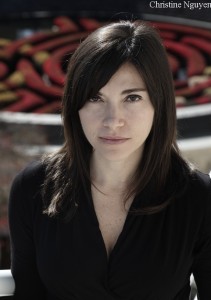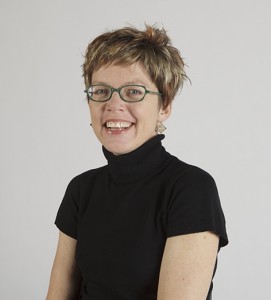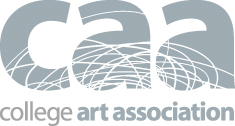One of the sessions I am eagerly anticipating is “Restructuring the Fields: The ‘Modern’ in ‘Islamic’ and the ‘Islamic in ‘Modern’ Art and Architecture”, which is chaired and organized by Dr. Esra Akcan, Associate Professor and the Director of Graduate Studies in the Art History Department at University of Illinois at Chicago, and Dr. Mary L. Roberts, John Schaeffer Associate Professor of British Art at University of Sydney. Having personally developed a research interest in the contemporary art of Iran and Iraq, I am excited by the diverse topics of the papers covered. Dr. Akcan and Dr. Roberts were kind enough to answer a few of my questions concerning their panel. There session will be on Wednesday 2/14 from 2:30 to 5:00 in the Astoria Room, Hilton, 3rd Floor. Here is our discussion:
Conor Moynihan: The session that you two are chairing is entitled “Restructuring the Fields: The ‘Modern’ in ‘Islamic’ and the ‘Islamic in ‘Modern’ Art and Architecture.” What were the motivating factors behind organizing this panel and what do you think its relevance is to discussions on “Modern” and “Islamic” art?
Esra Akcan and Mary L. Roberts: Throughout the last decade, there has been a major shift in the focus of minority studies from race and gender to religion, in response to the stereotypical casting of Islam as the ultimate threat to Western civilization in the post 9/11 political climate. While such minority studies are of utmost critical importance, they are also bound up with the older problems of identity politics. At this very junction, an institutional critique of several disciplines where the term has been constructed or maintained may provide a new perspective.
This session does not treat the “Islamic” as it is most often used in identity politics or in religious studies, but as a long-standing, institutionalized art historical category. Namely, we are much less interested in the adjectival-form of the “Islamic” as an identity marker of a person or an object due to his, her or its associated religion, but more in the term’s noun-form within the institutional structure of the discipline of art history. The particular issue that motivates the session is the double-marginalization of some nonwestern modern art and architecture, as they have been persistently excluded from the art historical fields of both the Islamic and the modern.
As scholars whose work is situated at the interstices of these fields, our call for papers was directed to researchers whose scholarship traverses conventional borders.
CM: There is a diverse array of scholars and papers being presented: Tracks: Islamicate Form and Proto-Modernisms in the German Construction of the Ottoman Railway Network, Peter Hewitt Christensen, Harvard University and Technische Universität; Code-Switching the Image of the Nineteenth-Century Ottoman Capital: The Sébah PhotographicFirm between Architectural and Visual Typologies, Heather E. Grossman, University of Illinois at Chicago; Nationalizing Cubism: Sufism and Bergsoniamism in Turkey, Wendy Miriam Kural Shaw, Universität Bern; Arabisance modernisée” Postwar Tunisian Modernisms and Revisionist Reconstructions, Nancy Demerdash, Princeton University; and The École de Tunis and Islam? Zoubeïr Turki’s Mural of the Monastir Ribat, Jessica Gerschultz, University of Kansas. How did you select these papers and what dialogue are you hoping to frame by putting them into a panel together?
EA and MR: Thank you for your question as it gives us an opportunity to publicly declare that we had to reject some very strong papers as we saw compelling connecting threads emerging between those we ultimately chose. This session brings together five scholars working on two territories, today’s Turkey and Tunisia in the late 19th and 20th centuries. While the papers about the same territory complement each other, there is also a second layer of conversation between works on either the imperial or the independence periods in both territories. Yet another layer of dialogue emerges between papers as they expose the participation of different visual media–architecture, photography and painting– in the making of imperial/colonial societies or independent nations. Moreover, all papers illustrate the need for theoretical and methodological debates about studying modern times in countries whose earlier histories are situated under the rubric of “Islamic” art history.
CM: There seems to be a growing interest in Islamic art from an academic and institutional perspective. What do you think the study of Islamic art adds to traditional art history education?
EA and MR: Our aim is not simply to add to traditional art history, but to potentially transform some of the terms by which it is understood. Allow us to draw attention to the title of this session: “Restructuring the Fields.” Therefore, this event will actually reach its target audience if it draws in scholars not only working on modern visual cultures of the Middle East and North Africa, but also those engaging with Europe, North America, Asia and modernism in any geographic domain.
CM: The major discourse on Modern art often comes from and focuses on Europe and the United States. Bringing Islamic art into the discourse on Modern art certainly opens up a new perspective to view the artistic productions of the Near East and North Africa. How has the Islamic world contributed to Modern art and how have the two intersected?
EA and MR: The multiple and historically precise answers to this crucial question is at the heart of the dialogue we seek to have around the diverse case studies in our session. We invite readers to join us to take part in this conversation.
CM: It seems that one of the dangers of using Islamic art as a title is that it refers to a huge canon of art made over centuries under vastly different political institutions, landscapes, and cultures. It can include the work of contemporary artists practicing now in Morocco as well as Safavid architects working in what is now Iran. What are some of the ramifications of looking so broadly?
EA and MR: Yes, and this is part of the reason we think an institutional critique is necessary. However, we need to redirect the question to the discipline of art history as it is currently constituted. This “broadness” is also true for many other art historical fields, but in most cases the name of the field is not imposed as an identity marker to all the artworks covered by it. The scholars in “Islamic art and architecture” have already criticized and transformed the way “Islamic” has been used as an essentialist category.
CM: Digging into Modernism and Islamic art a bit more, what does this intersection look like? Which artists and architects can be looked to as examples of both Modernism and Islam? And who are some notable contemporary artists that can be considered “Islamic”?
AE and MR: We question using “Islamic” as a reifying identity marker to delineate a modern or a contemporary artist. Beyond that, we are interested not just in bringing underrepresented artists into visibility, but also exploring patterns of exchange, contexts of reception, networks of practice and patronage, and the multidirectional cultural interactions within and beyond this geographic domain.
—–
Esra Akcan is an Associate Professor and the Director of Graduate Studies in the Art History Department at the University of Illinois at Chicago. She completed her architecture degree at the Middle East Technical University, and her Ph.D and postdoctoral degrees at Columbia University in New York. She is the author of the books Architecture in Translation (Duke University Press, 2012), Turkey: Modern Architectures in History (Reaktion, 2012, with Sibel Bozdogan), Çeviride Modern Olan (YKY, 2009) and (Land)Fill Istanbul: Twelve Scenarios for a Global City (124/3, 2004).
Mary Roberts is the John Schaeffer Associate Professor of British Art. She specializes in nineteenth-century British and Ottoman art with particular expertise in Orientalism, the history of artistic exchanges between the Ottoman Empire and Europe and the culture of travel. Her books include:Intimate Outsiders. The Harem in Ottoman and Orientalist Art and Travel Literature (Duke, 2007) and four co-edited books: The Poetics and Politics of Place. Ottoman Istanbul and British Orientalism(Pera Museum and University of Washington Press, 2011) Edges of Empire. Orientalism and Visual Culture (Blackwells, 2005), Orientalism’s Interlocutors, (Duke, 2002) and Refracting Vision. Essays on the Writings of Michael Fried (Power Publications, 2000/2012). Her next book entitled, Istanbul Exchanges. Ottomans, Orientalists and Nineteenth-century Visual Culture, is forthcoming with University of California Press.
One of the sessions I am eagerly anticipating is “Restructuring the Fields: The ‘Modern’ in ‘Islamic’ and the ‘Islamic in ‘Modern’ Art and Architecture”, which is chaired and organized by Dr. …



